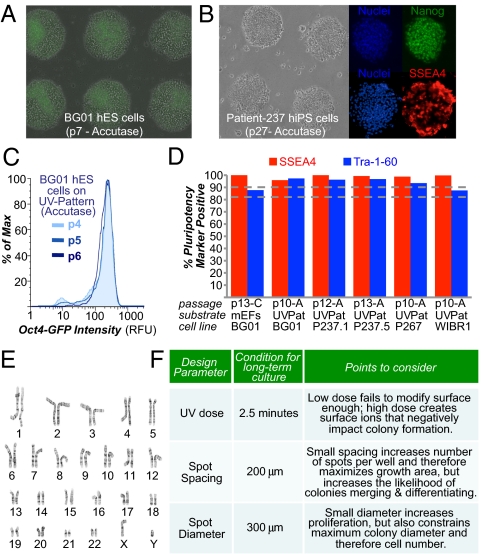Fig. 6.
UV-patterned substrate supports single-cell passaging of human pluripotent stem cells. Images of BG01 hESC (A) and patient-237 hiPSC (B) cultures on “UV-Pattern” (as described in Fig. 2A) after 7 and 27 passages using single-cell accutase dissociation. The image of hESCs at passage (p) 7 in A contains an overlay of a fluorescent image indicating high expression of Oct4-GFP. Immunostaining of patient-237 hiPSCs at passage 27 indicates expression of the pluripotency marker Nanog (green) in all cell nuclei and high expression of SSEA-4 (red). Surfaces were precoated with 20% (vol/vol) bovine serum, and cells were seeded in ROCK inhibitor for the first 8–12 h. (C) Flow cytometry of BG01 hESCs with the Oct4-GFP reporter after three consecutive passages on UV-Pattern with accutase. (D) Flow cytometry of cells for pluripotency markers SSEA-4 and Tra-1-60, after >10 consecutive passages on UV-Pattern for five different cell lines. “A” indicates accutase-mediated passaging. For the transgenic Oct4-GFP BG01 cells passaged on mEFs, only GFP-positive cells were analyzed for Tra-1-60 and SSEA-4 expression. Therefore, mEFs were excluded from the analysis. (E) Normal 46XY karyotype was maintained for patient-237 hiPSCs propagated on UV-Pattern for more than 5 mo (27 passages). (F) Design parameters for developing a UV-treated culture system for human pluripotent stem cells.

